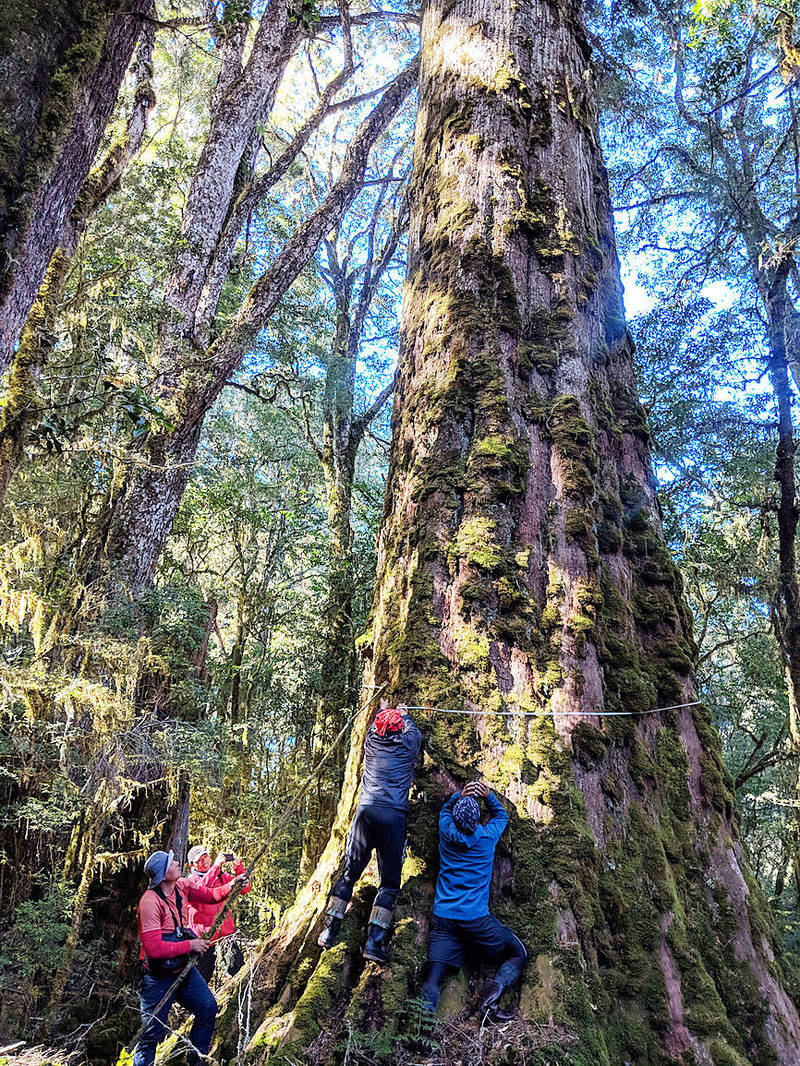《TAIPEI TIMES》 ‘Superlative’ tree density in Taiwan mapped out

Council of Agriculture researchers measure the circumference of a tree in the Central Mountain Range on Feb. 20, 2019. Photo: CNA
/ CNA, with staff writer, Taipei
A team of researchers yesterday unveiled a map of Taiwanese “superlative trees,” with their project showing that the nation has among the highest density of trees taller than 65m in the world.
The map documents 941 trees in Taiwan standing 65m or taller, most of which are in the Central Mountain Range, on Xueshan (雪山) and on Alishan (阿里山).
Using raw data compiled by the Ministry of the Interior, the team said that they had located the superlative trees, classified by height, using a unique methodology developed by the researchers.
However, the team said that the methodology was limited, as it did not allow researchers to identify the species of most trees on the map.
The tallest known tree in Taiwan is a conifer of the Taiwania cryptomerioides species measuring 79.1m in height, located in a valley in the Shei-Pa National Park, the team said.
Taiwan has 941 superlative trees, the data showed.
National Cheng Kung University professor Wang Chi- kuei (王驥魁), who co-led the project alongside Taiwan Forestry Research Institute assistant researcher Rebecca Hsu (徐嘉君), said that only 2.1 percent of climate zones are considered conducive for the existence of superlative trees.
The preservation of superlative trees has been made more challenging by climate change and logging, and experts have forecast that such trees could go extinct in a few decades, Wang said.
Taiwan is an ideal habitat for the growth of superlative trees, and the location of such trees in inaccessible places in the nation has protected them from loggers, Wang added.
Using airborne light detection and ranging, and a unique algorithm, the team identified the trees over five years, Wang said.
To further its understanding of Taiwan’s mountains and forestry, the team plans to embark on a project that would investigate how many superlative trees died over a 10-year period, Wang added.
新聞來源:TAIPEI TIMES
















